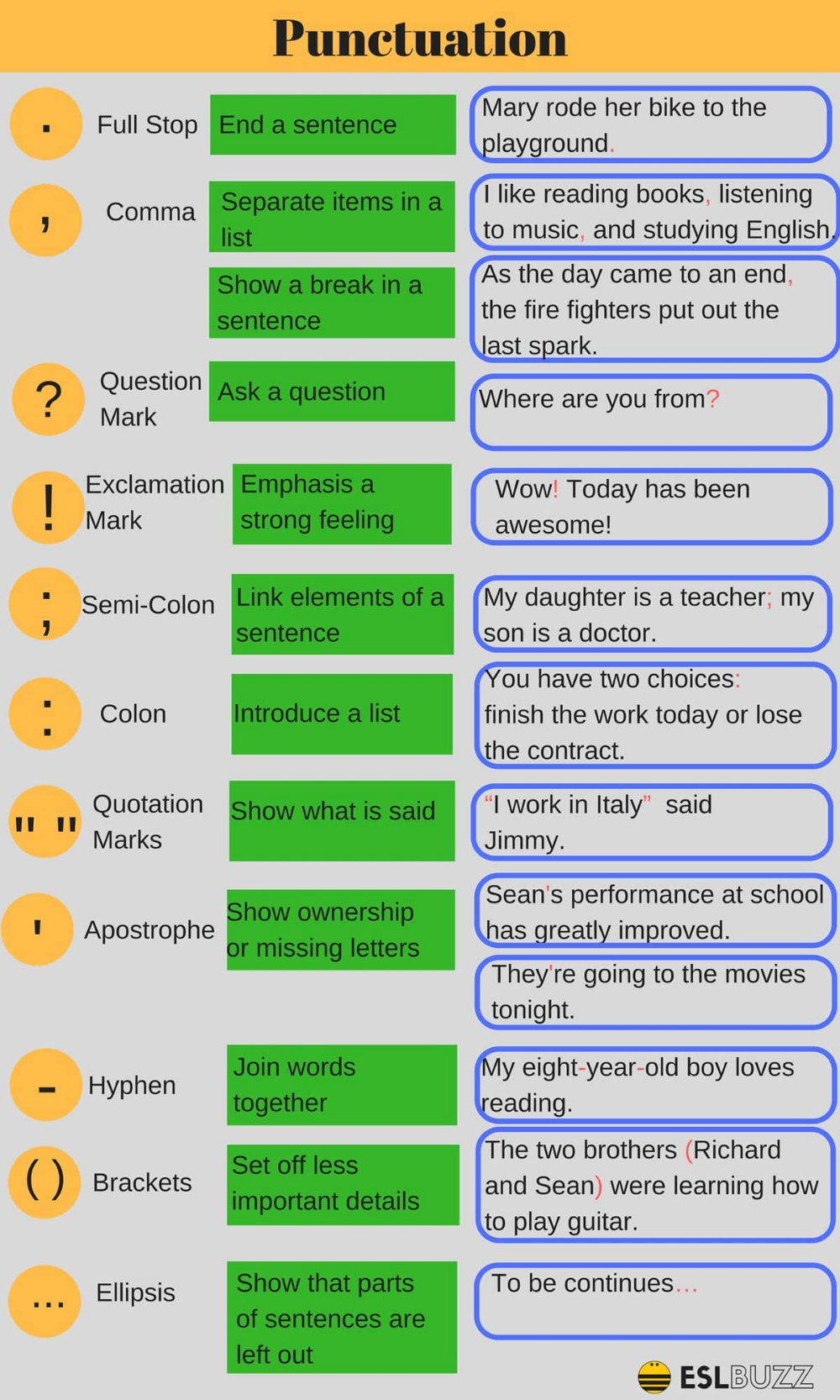Punctuation is an essential part of writing that helps to convey meaning, clarify the structure of sentences, and guide readers through the text. Understanding and using punctuation correctly can greatly improve the readability and effectiveness of your writing. In this article, we will explore some basic punctuation rules and provide examples to help you master this important aspect of written communication.
1. Period (.)
The period is used to indicate the end of a sentence. It is placed at the end of a declarative sentence, an imperative sentence, or an indirect question.
Example: She went to the store to buy some groceries.
2. Comma (,)
Commas are used to separate items in a list, set off introductory phrases or clauses, and separate independent clauses in a compound sentence.
Example: I need to buy apples, bananas, and oranges at the grocery store.
3. Colon (:)
A colon is used to introduce a list, an explanation, or a quotation.
Example: Please bring the following items to the meeting: pen, notebook, and agenda.
4. Semicolon (;)
A semicolon is used to connect two closely related independent clauses without a conjunction.
Example: She was tired; she decided to take a nap.
5. Exclamation Point (!)
An exclamation point is used to express strong emotion, surprise, or emphasis.
Example: Congratulations on your promotion!
Mastering punctuation rules will not only make your writing more clear and coherent but also help you effectively convey your message to your readers. Remember to always proofread your work to ensure proper punctuation usage and enhance the overall quality of your writing.
